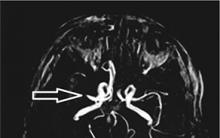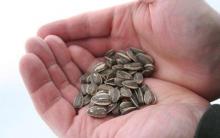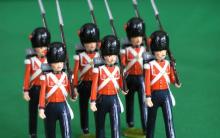So today, continuing the military theme and ignoring all sorts of fantasy and the like, you and I will draw a really cool dude with a sniper rifle. In anticipation, I’ll tell you a little about snipers: So, a sniper is a specially trained dude who will give odds to any eagle eye, since, aiming at a small peephole, he manages to hit the target and hit that very target. Here are the types of snipers:
- Sniper saboteur. This is someone who appears in many computer games. Acts alone or with a partner. He tries in every possible way not to give himself away: quieter than water, lower than the grass, that is. It can kill at a distance of 1.5 - 2 kilometers. The weapon is a first-class, precision rifle with a silencer.
- Infantry sniper. Works alongside the infantry. It shoots at important targets with general bang, so it doesn’t really need a silencer. The distance is usually up to 400 meters, there is no time to take special aim.
- Police sniper. Well, this one is generally a loser compared to the previous two: it shoots at a distance of no more than two hundred meters. But not everything is so simple, it turns out. Usually the criminal is armed and has already pointed his gun at the helpless victim. So you need to shoot in such a way as to hit your finger and prevent this bastard from shooting.
So, let's get creative.
How to draw military equipment with a pencil step by step
Step one: Draw an oval head at the top of the sheet. From there downwards there is a large body. We will outline other parts of the body with large oval shapes. The man holds military equipment in his hands, but so far it is only an elongated figure.  Step two We gradually transform all the defining details into the human body. Some details of the clothing are already visible. Let's give the rifle the desired shape.
Step two We gradually transform all the defining details into the human body. Some details of the clothing are already visible. Let's give the rifle the desired shape.  Step Three Draw the clothes: a T-shirt, a cap, rolled-up pants, and shoes. Let's pay more attention to weapons. It is squeezed by strong gloved fingers. By the way, there are folds on the trousers and gloves. Now let's move on to the face. The eyes are covered with dark glasses, and a small ear is clearly drawn. There is a thick beard on his face.
Step Three Draw the clothes: a T-shirt, a cap, rolled-up pants, and shoes. Let's pay more attention to weapons. It is squeezed by strong gloved fingers. By the way, there are folds on the trousers and gloves. Now let's move on to the face. The eyes are covered with dark glasses, and a small ear is clearly drawn. There is a thick beard on his face.  Step Four Everything that we have drawn needs to be strengthened: outline, add lines, and then draw in the missing details. This is how we ended up with a strong man, holding a serious gun in his hands and carefully watching the target.
Step Four Everything that we have drawn needs to be strengthened: outline, add lines, and then draw in the missing details. This is how we ended up with a strong man, holding a serious gun in his hands and carefully watching the target.  I also advise you to look at drawing lessons for other types of weapons, for example.
I also advise you to look at drawing lessons for other types of weapons, for example.
Step-by-step instructions for practical drawing of tanks, planes and helicopters.
Items needed for work: a clean white sheet of good quality paper, a pencil with a medium-hard or soft lead, an eraser. Compasses, ink, feather, brush, ballpoint pen, felt-tip pen - optional.
Choose a sample of military equipment that you would like to draw.
Using light touches of the pencil, without pressure, very carefully and carefully apply on the paper the strokes that make up the initial (first) “step” - usually it is located in the upper left corner of the diagram you have chosen.
Then take the second “step” - also without pressure and just as carefully. Keep track not only of the direction and curvature of the lines, but also of the distance between them, that is, their relative position. The size of the drawing should correspond to the size of your sheet of paper - not too small and not too large. The first “steps” seem to be the least difficult, but they must be performed with particular precision, because any mistake made at the beginning of the process can spoil the final result.
New lines for each “step” are shown in the diagram as bolder, so that it is easier for you to recognize what exactly should be added to your drawing at the next stage.
Continue working as before with light, thin strokes. If any line turns out to be too thick or dark, lighten it with an eraser: run it along the line without much pressure, without trying to erase it completely.
And a few more tips.
Remember that for all the apparent complexity of some objects, they can always be reduced to simple geometric shapes: a ball, a cone, a pyramid, a cube, a parallelepiped, a cylinder.
Well, of course, let’s say, ships do not exist on their own, but, as a rule, organically fit into the surrounding landscape. Therefore, elements of the landscape - sea, river, rocks, even if only slightly outlined - will significantly enliven and enrich the drawing.
Having finished applying light strokes, that is, having completed the entire eight “steps” shown in the selected diagram, and making sure that all the elements of your drawing correspond to the desired image, outline them with confident pencil movements with the necessary pressure. After this final finishing, the drawing can be considered ready. If desired, you can enhance the contrast of the lines using ink (using a thin brush or steel nib), a ballpoint pen or a felt-tip pen. When the ink, paste or ink is dry, use an eraser to remove any unnecessary pencil marks.
Remember: if your first attempts to draw do not lead to the desired result, keep trying. It is very important not to lose perseverance, patience, and enthusiasm. In the end, your efforts will be crowned with complete success - at that moment you may not immediately believe yourself, but you will still be pleasantly surprised by what you have achieved.
We sincerely hope that your drawing skills will improve and the long time spent on recreating the images of all these formidable and in their own way beautiful examples of technology will not be wasted.





 Drawing a Rocket Ship (Russia) l
Drawing a Rocket Ship (Russia) l 




 Drawing the Katyusha multiple launch rocket system (USSR)
Drawing the Katyusha multiple launch rocket system (USSR) 
 Drawing a torpedo boat (Russia) r
Drawing a torpedo boat (Russia) r 

Today we will tell you what drawings on the theme of war you can draw for the holiday “Victory Day”. This great holiday informs us that in 1945 we won a victory over Nazi Germany. The 1941 war was the worst and claimed many lives. Now, celebrating this holiday, we pay tribute to our grandfathers and great-grandfathers for their victory!
If you want to draw drawing on the theme of the Great Patriotic War, then we will help you with this! Here are the options for themes for drawing war:
1. Battlefield (tanks, planes, military);
2. In the trench (a military man shoots from a trench, a doctor bandages a wound in a trench);
3. Portrait of a military man or full-length;
4. The return of a soldier from the war.
Topic: Great Patriotic War (1941-1945) drawings
Here is a lesson on this topic that we have prepared for you. It shows a fight between two soldiers on the battlefield. This drawing is quite simple to make; you can color it with pencils, paints or any other way.
We have also prepared pictures for you to draw. There is children's drawing on the theme of war and several examples of pictures on the same topic. You can simply sit in front of your computer and draw any of these pictures with a pencil.




And also here are some variants of drawings on the theme of war, drawn with a pencil or pen.




Children's drawing on the theme of war
We have developed several step-by-step lessons especially for beginning artists. How to learn to draw a tank, a military plane or a rocket with a pencil - this is what you can learn, and if you come up with a drawing theme and combine several of our lessons into one, you will get a complete drawing on the theme of the Great Patriotic War!
2 variants of St. George ribbons
And here are 2 options for tanks for your drawing. It’s difficult to draw them, but it’s possible with the help of our lessons.
We draw various military equipment: airplane, helicopter, rocket. All the lessons below will help even a novice artist draw a picture on the theme of the Great Patriotic War.
Drawing on the theme of Victory
If you need to draw a greeting card, then here are lessons on drawing a card with a pencil (everything is explained step by step). The cards depict symbols of victory, and the inscriptions “Happy Victory Day!” are beautifully executed.
On the card you will draw a beautiful number 9, congratulatory inscriptions, stars and ribbons.




And here is a drawing of a military order, a St. George ribbon and an inscription for Victory Day.
Heroes of the Great Patriotic War of 1941-1945. known to everyone.
Songs are written about them, and many memorials are dedicated to them. However, few people remember that many children died during the war.
And those who survived began to be called “children of war.”
1941-1945 through the eyes of children
In those distant years, the kids lost the most precious thing in their lives - a carefree childhood. Many of them had to stand at the machines at the factory, like adults, and work in the fields to feed their families. Many children of war are real heroes. They helped the military, went on reconnaissance missions, collected guns on the battlefield, and took care of the wounded. A huge role in the victory in the Great Patriotic War of 1941-1945. belongs specifically to children and teenagers who did not spare their lives.
Unfortunately, it is now difficult to say how many children died then, because humanity does not know the exact number of deaths, even among the military. Children-heroes went through the siege of Leningrad, survived the presence of fascists in the cities, regular bombings, and famine. Many trials befell the children of those years, sometimes even the death of their parents before their eyes. Today these people are over 70 years old, but they can still tell a lot about those years when they had to fight the Nazis. And although at parades. Dedicated to the Great Patriotic War of 1941-1945. They honor mainly the military; we should not forget the children who bore on their shoulders the hunger and cold of a terrible time.
Related materials
Pictures and photos on the topic “Children of War” will help tell you what war looks like through the eyes of these people.
Many photographs known to modern children mainly show heroes who fought for the liberation of our land and took part in battles. On our website we offer pictures, drawings and photos on the topic “Children of War”. Based on them, you can create presentations for schoolchildren about how children, together with the military, achieved victory in the fight against the Nazis.
Children should pay attention to the life, clothing, and appearance of children of that time. Most often, photos show them wrapped in downy scarves, dressed in overcoats or sheepskin coats, and wearing hats with earflaps.
However, perhaps the most terrible are the photos of children in concentration camps. These are real heroes whom time has forced to endure unforgettable horrors.
It is worth including such photos in presentations for older children, since children are still too impressionable, and such a story can negatively affect their psyche.
The war through the eyes of those guys looked like something terrible and incomprehensible, but we had to live with it every day. It was a longing for their murdered parents, about whose fate the children sometimes knew nothing. Now children who lived at that time and have survived to this day remember, first of all, hunger, a tired mother who worked for two at the factory and at home, schools where children of different ages studied in the same class, and they had to write on scraps of newspapers. All this is a reality that is difficult to forget.
Heroes
After the lesson and presentation, modern children can be given a task, timed to coincide with Victory Day or another military holiday, to create color drawings depicting children of war. Subsequently, the best drawings can be hung on a stand and photos and illustrations of modern guys can be compared as they imagine those years.
The heroes who fought against fascism today remember the cruelty that the Germans showed against children. They separated them from their mothers and sent them to concentration camps. After the war, these kids, having grown up, tried for years to find their parents, and sometimes they found them. What a meeting it was, filled with joy and tears! But some still cannot find out what happened to their parents. This pain is no less than that of parents who have lost their babies.
Vintage photographs and drawings are not silent about those terrible days. And the modern generation must remember what they owe to their grandparents. Teachers and kindergarten teachers should tell children about this, without hushing up the facts of bygone years. The better young people remember the exploits of their ancestors, the more they themselves are capable of exploits for the sake of their own descendants.
Military pencil drawings can be created step by step even for young children. There are a lot of lessons and instructions on the Internet, as well as pictures for sketching, which allow you to independently transfer various types of military equipment onto paper.
Boys will like to draw drawings on a military theme in pencil, but such pictures can also be created by girls, for example, on the eve of a big holiday on May 9 or February 23. On Victory Day, the drawing will be an excellent gift for veterans or relatives who served in the army.
Military aircraft pencil drawing
A military aircraft can look interesting in the form of a simple pencil drawing without coloring with paints or colored pencils. First, you should check if you have the tools necessary to create an art project:
- ruler;
- pencil;
- blank sheet of paper;
- eraser.
If possible, choose hard and soft pencils, which are convenient for making auxiliary lines or drawing the main ones. The following simple instructions will allow little artists to create their own beautiful military aircraft on paper.
- We create the main lines that serve as the basis for placing the plane on the leaf. Using a ruler, draw a long line, which we tilt down slightly. The second will intersect the first, you need to lead it from the lower left corner of the leaf to the upper right, this is the basis for the wings and tail. To make the tail of the plane realistic, add a small short line on the first main line, it should be perpendicular.
- If the lines are not a good enough guide for drawing the correct shape of the plane, we create additional points that serve as the edges of the nose, tail and wings of the object. It is recommended to start from the far right point, where the nose will be located.
- We draw the airplane cabin with smooth lines. Movements should be smooth; you should not press the pencil on the paper. The cockpit lines should taper slightly as you approach the leftmost point, where the tail of the aircraft is located.
- From the main lines of the cockpit, focusing on the second auxiliary lines with the same soft and smooth movements, we draw the wings of the aircraft.
- An important step that completes the base is drawing the tail. On military aircraft, the tail can have different shapes, with additional elements, so it is advisable to look at the example drawing and ask the child to copy the finished shape.
- The last step is adding important elements to bring the plane to life. A child can add various emblems to the aircraft body; he cannot do without drawing the front glass and side windows.
- After the lines are drawn, using an eraser, auxiliary lines and points are removed, unnecessary strokes that were the basis of the sketch.



All drawings of military equipment in pencil are created on this basis: auxiliary lines intersecting in the right places, as a guide for creating basic contours.
Warship pencil drawing
Military pencil drawings allow a child not only to understand the basics of creating complex drawings, but also to study the structure of various vehicles. Many children enjoy creating a warship and a pencil drawing that requires following instructions.
Unlike the previous drawing, children begin the art project by drawing the waves of the sea, which are located at the bottom of the paper. Waves are curved lines that young artists can draw.
On the waves you need to place one horizontal line without tilting. A ruler will come to the rescue with this. The length of the main horizontal line should be of average length, taking into account the fact that additional lines will diverge to the sides, continuing the base of the ship's hull; they are made using a ruler. To do this, the ruler is placed slightly at an angle towards the outer sides of the leaf. You can connect these two lines with one solid line. The ship's base is ready.
Next, you should focus on the example picture, from which the cabin compartments and deck details are copied. The guns must be drawn, and the main “highlight” of such a creation will be the ship’s flag. An important detail of the drawing. Finally, several curved wave lines are added around the ship to create the illusion of military transport moving.
Such military pencil drawings for children may seem simple at first glance, but with the help of shading they decorate the picture, and if desired, they add a little color with the help of paints.



Soldier drawing
A drawing of a military soldier with a pencil can be made by small children. The main thing is to first practice repeating basic geometric shapes and learn how to make neat lines.
As in the case of drawing a military airplane with a pencil for children, it is worth creating several auxiliary lines with which the proportions of the soldier’s body will be correct.
- First, let's work on the markup. The frame of the drawing is the basis of the soldier’s body. On the vertical line at the top we draw an oval, which serves as the base for the head. Just below he draws two trapezoids - the base of the body. From the trapezoid we make lines for the arms and lines below for the legs. An important point is that the drawing is made larger in order to clearly display all the details.
- In the oval area, for accuracy, you can create auxiliary lines with thin strokes: one horizontally, just above the center of the oval, the second vertical, clearly in the center, crossing the area of the soldier’s future face. From the oval on the sides we draw ears with neat curved lines. Along the auxiliary horizontal line we add eyes and exactly above them two souls of eyebrows. In the lower part there will be a nose, and between the created details of the face. You can add bangs on top of the oval.
- Let's draw the cap. If it is difficult to replicate its shape, you can settle on a small triangle that “sits” exactly on top of the oval.
- From the oval down to the trapezoids with smooth lines.
- From the neck we move on to drawing the shape of the body, making the trapezoid less angular. At this stage, you can immediately work on such details as a collar, other clothing items in the form of a belt and shoulder straps.
- Don't forget about pockets, buttons and a star on the strap.
- The lower part is trousers. Kids should help with them, because not all little artists will be able to repeat the lines of the folds of trousers. We finish this part with boots.
- Step by step, slowly, we draw the arms and sleeves of the uniform, from which the soldier’s hands can be seen. It is not necessary to draw the hands in detail. Kids can stop at the schematic image.














Consequences of tubal ligation during caesarean section
The benefits of sunflower seeds for the heart, hair and nerves
Why do my legs give way at the knees?
Name energy: how the patronymic influences fate and the birth program Name patronymic meaning character
First Chinese Emperor